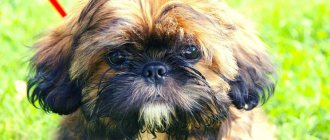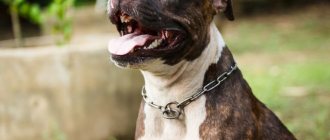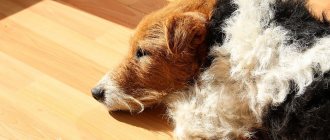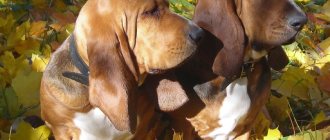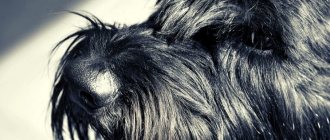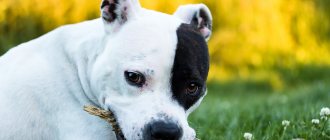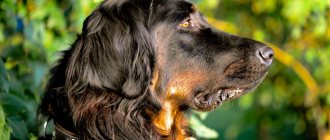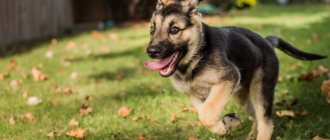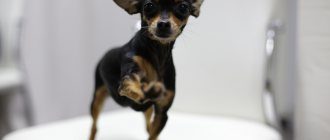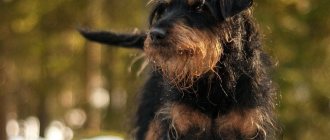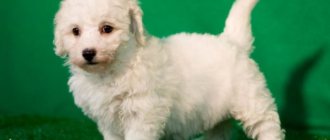01/28/2020 Irina Malinina 0 comments
The Bichon Frize is a small decorative dog with a bright, memorable appearance and a cheerful character. Stylishly trimmed pets, resembling a fluffy dandelion, can bring a smile of tenderness to the face of every person. This animal has an inexhaustible supply of energy and remains active until old age.
The French Lapdog, also called the Bichon, is an intelligent dog with many talents and amenable to training. A distinctive feature of the breed is its snow-white curly fur.
History of the Bichon Frize breed
Bichon Frize
The past of French lap dogs, if not covered in mystery and darkness, is thoroughly confused. According to experts, the distant ancestors of the Bichon Frize were small white dogs, which in turn were descendants of water barbets. Curly-haired fluffy creatures inhabited the coast and islands of the Mediterranean Sea and were very successful in catching rats, for which they were often settled on ships. The first name of the breed sounded like “Bar Bichon”. "Bar", short for "barbet", and "bichon" are French for "velvet cushion".
Over time, the genus of white dogs with curly hair has grown significantly, as a result of which such branches as the Bolognese (Italian lapdog), Maltese (Maltese lapdog) and the Tenerife Bichon have branched off from it. The latter variety was especially popular among the European elite during the Renaissance and, in fact, gave rise to the modern breed of French lapdogs.
By the 13th century, bichons acquired the status of a luxury item. A French lapdog puppy could be presented as an exclusive gift, or used as hard currency when concluding a deal. Francis I contributed to the special popularization of the breed. The Knight King kept at his court an innumerable number of lap dogs, to which in those days a new nickname was stuck: “infanta dogs.”
After the French Revolution, interest in Bichons gradually faded away. From the palace chambers, the dogs quickly moved to the Parisian streets, from where they migrated to traveling circus troupes. The official name “Bichon Frize” was given to the breed by the International Canine Association in 1933. A year later, general standards for the appearance of French lap dogs were formulated. As for the spread of the breed, the favorites of Francis I reached the United States only in the 50s of the last century, and in England, Bichons began to be bred only in the mid-70s.
I love lying on the grass so much!
Two bichon friends, one wet, one dry
Boy
General characteristics of boys' behavior.
- Kindness. Males are generally more affectionate than females. However, they always crave the attention of their owners.
- Sociability. The male dog is more inclined to have fun and socialize throughout his life. The girl becomes more and more withdrawn with age.
- Motivation. Boys are motivated by food. Thanks to this, they are easier to train.
- Attentiveness. They want to always be close to the person and please him.
- Aggressive behavior. Unneutered males may exhibit aggressive behavior towards other males.
Appearance of Bichon Frize
Bichon frize puppy
It is difficult to find a more endearing creature than the French lapdog. Drowning in their airy “fur coats”, they resemble weightless white clouds, while the miniature dimensions of the animals give them a resemblance to a soft wind-up toy. Like the vast majority of representatives of the indoor and decorative breed, Bichon Frizes have an inexhaustible supply of charm. The size of an adult individual usually does not exceed 30 cm, and its weight is 3-5 kg.
Head
Proportional, with a flat skull shape (the fluffy fur of the animal gives the head a rounded appearance) and the same flat cheekbones. The nose is round, with black skin. Muzzle with a wide base, gradually tapering towards the nose. The transition from the frontal part to the muzzle is not clearly expressed.
Lips
Thin, black. When the mouth is closed, the lower lip is usually not visible.
Jaws
Bichon Frize with his beloved owner
The ideal parameter is a scissor bite, but some felinological associations also allow a straight bite. The jaws are wide, with even incisors.
Eyes
Round black (sometimes brown), located in a straight line, the whites are not visible. The skin around the eyes is pigmented black, emphasizing the contrast between the light coat and the organs of vision.
Ears
The Bichon Frize has drooping ears, repeating the shape of an isosceles triangle. The exemplary length when extended is to the corners of the lips. Covered with long, wavy hair.
Neck
Long (1/3 of the length of the entire body), set high, thin at the base of the skull and gradually thickening as it approaches the withers.
Bichon Frize muzzle
Body
Compact in size, with a strong, level back and a wide, slightly curved loin. The chest is of moderate width, deeply dropped, with a pronounced sternum.
Limbs
Who's the good boy here? I!
Distinctive features of the forelimbs are thin bones. Legs straight, elbows pointing back. The shoulders are oblique, not protruding. The hind legs are level, with a muscular and wide thigh. The shape of the paws is round, with elastic black pads and toes gathered into a “ball”.
Tail
The Bichon Frize's tail is abundantly covered with lush hair, located significantly lower than the back and equal to half the length of the body. Doesn't stop. An animal experiencing positive emotions raises its tail up and holds it parallel to its spine. In this case, the guard hair (dewlap) can come into contact with the back, but the tail itself does not.
Wool
Curly, airy, not prone to bunching into so-called “cords”, 7 to 10 cm long. The undercoat is thick, dense and springy. An animal caught in the rain usually does not get wet, since due to the thickness of the undercoat, moisture does not penetrate deep into the “coat”. The cleanly washed coat of a Bichon Frize is more voluminous, so after taking a bath and drying, the animal turns into a tightly knit “dandelion”. To give the silhouette some completeness, Bichons are usually cut.
Color
Adults are snow-white in color, but puppies may have a beige or yellowish undertone to their coat, which disappears as they grow older. According to standards, areas of fur with a yellowish tint should occupy no more than 10% of the surface of the puppy’s body.
Vices
Bichon Frize at an exhibition
The list of the most common defects in the Bichon Frize includes:
- coat pigmentation (red and black spots);
- coat that is too short, straight or bunched up into “cords”;
- malocclusion (overbite or underbite).
The main disqualifying defects of show-class animals:
- pink colored nose;
- a tail twisted into a “steering wheel” or in a spiral;
- light shade of the iris;
- cryptorchidism;
- aggressive and, on the contrary, too cowardly character.
List of suitable nicknames
Choosing a nickname for a new family member is not only a creative process, but also a responsible one. Often pet names repeat the names of cartoon characters.
In this case, the following will be relevant for decorative bichons:
- Pif;
- Dale;
- Bunny;
- Daisy;
- Lady.
In Russian-speaking countries, representatives of the Bichon Frize breed are more often called:
- Snowstorm;
- Fluff;
- Front sight;
- Snowflake;
- Tishka;
- Mila;
- Yasha;
- Baby.
There are no clear rules for choosing a pet's name; the final option will depend only on the owner's imagination. In this regard, dog handlers recommend refraining from difficult-to-pronounce nicknames and not changing the nickname in the process of raising an animal.
Photo of Bichon Frize
Personality of the Bichon Frize
Who are you?
I want to play with you! French lapdogs are real little “energizers” who never sit still for a minute. These are extremely friendly, active and funny creatures that easily take root in both spacious houses and small apartments. Bichons are very sociable and will be happy to live with families, which will give them the opportunity to involve as many people as possible in their games.
Because of their friendly nature and immense charm, French lap dogs are often attracted to pet therapy. The cute snow-white lumps are frequent guests in children's hospitals and nursing homes. In addition, these decorative dogs make reliable watchdogs. Bichon frizes have a ringing voice, which they use with pleasure every time an unfamiliar creature appears on the threshold of the apartment.
Bichon Frize with a child
Bichon Frize with a cat
Difference from Maltese
Bichons are often confused with the Maltese or Maltese. The characteristics of these decorative pets are similar in size, disposition and color. However, there are a number of differences. The Maltese is slightly lower than the Bichon at the withers (no more than 20-25 cm), has straight hair and does not require such careful treatment of the eyes and ears.
Unlike the Frize, the Maltese does not have problems with tearing and does not need to remove hair from the ears. In addition, the latter are less amenable to training.
Education and training
Bichon frize walks with owner
Training French lap dogs is not that difficult. Miniature dogs easily learn not only elementary, but also quite complex commands, which is why Bichons can often be found in the circus arena. It is better to start training animals from an early age, but this should be done taking into account the characteristics of the breed. The simplest commands like “Ugh!”, “Place!”, “Come to me!” Bichon Frize puppies learn quickly, but developing more complex skills will take a little longer.
When playing with people, puppies, and even adult dogs, often take such liberties as biting. To minimize the risk of accidental injury, the animal should be weaned from this habit as early as possible.
French lapdogs have a somewhat flighty character and do not like to concentrate on one activity for a long time. They quickly get bored with long and monotonous lessons, which cannot be said about pranks and mischievous tricks.
Bichons categorically do not accept rough treatment or threatening shouts, so using force during training and forcing the animal to carry out commands “under pressure” is obviously a failed idea. Ideally, raising a dog should be based on its interest in the learning process.
Trying to put yourself on the same level as an animal is also not worth it. The Bichon must understand that he is not the boss in the house, but the owner. Otherwise, there is a risk of getting a spoiled and uncontrollable pet.
When training Bichon Frizes, you should be patient and have all sorts of goodies, which will become an additional incentive for the animal to learn. Behave with your dog affectionately but firmly, carrying out exercises in a relaxed playful manner with the obligatory encouragement of the pet at the end of the process. If the animal behaved badly during training, you can “read a lecture” to it in a stern tone (not to be confused with shouting).
Owners who want to involve their pet in volunteer activities are advised to find a canine therapy training program for their four-legged friend. Completing such courses will provide the dog and its owner with the opportunity to participate in pet therapy activities.
Bichon in a warm jacket
This kid is clearly unhappy about something.
Reviews
Anna, Rostov-on-Don: “This is an amazing, cheerful creature. Like a bell, the pet runs all over the house, doesn’t leave his daughter’s side, the Frize simply adores her. I am very pleased that we have such a family member.”
Natalya, Sochi: “We gave a bichon to a child for his birthday (we take care of the animal, of course, with the whole family). The fur is amazing, but giving our Dave a bath is a real punishment. And your pet’s eyes need to be wiped constantly – they water.”
Elena, Donetsk: “Frise is the best pet for a family and a small apartment. Not an animal, but a complete positive! I rarely take her outside, I trained my Bichon to wear a diaper. This way it gets dirty less and you can bathe the animal once every 10 days. I chose the name Pfeiffer for my pet.”
Victoria, Moscow: “I have 2 mini bichons – Matilda and Gosha. Playful, constantly on the move, affectionate and loving – they are the charm, not the doggies. I pamper my pets with new clothes. I sometimes carry Matilda with me; she is smaller and lighter than Gosha, who weighs 6 kg.”
Care and maintenance
Clipped Bichon Frize
The Bichon Frize is not a breed you can afford to be a little lazy with. Despite the fact that French lap dogs practically do not shed, their lush coat requires careful care. It is necessary to comb the animal every day (preferably after walks, to remove debris and grains of sand entangled in the fur), and also use a slicker brush to make the “fur coat” airier.
If a pet comes from the street, its paws, face and genitals are usually washed. French lap dogs are supposed to be bathed once a month. When washing, be sure to use a mild shampoo and conditioner to make the coat easier to comb. It is advisable to visit a groomer once every 2-3 months. However, if you are not raising a show-class animal, you can save a little on grooming and cut the animal’s hair yourself.
The Bichon Frize's eyes should be checked every day and, if necessary, cleaned with a cotton swab dipped in cool, boiled water. The same rule applies to keeping your ears clean. Bichons' nails are trimmed twice a month with a nail clipper or tweezers. The unevenness of the claw plate formed after the procedure is filed down. Teeth and mouth should be cleaned using special toothpaste at least once a week.
Feeding
Feeding your French lapdog with natural products, preferring a combined feeding option or limiting yourself to dry food is a question that each owner decides in his own way. Among the obligatory “dishes” that must be present in the diet of a “dandelion dog”, it is worth mentioning raw meat (to soften the product, you can lightly pour boiling water over it), boiled and raw vegetables, sea fish, from which the seeds have been previously removed, brewed buckwheat and oatmeal cereals Since adult Bichon Frizes are fed twice a day, it is better to give them meat with their evening meal and in thoroughly chopped form (it is very desirable that it is not pork).
Kus
Including milk in the Bichon menu is permissible only for puppies. For adults, a small amount of any fermented milk drink once a week is enough. It is highly not recommended to treat your pet with fatty, spicy and salty delicacies. Sweets, sausage, pastries, pasta, legumes and potatoes are also strictly prohibited, not to mention meat and chicken bones.
Individuals on natural feeding are advised to take vitamin complexes. Be sure to make sure that these are not preparations based on carrot and algae extracts, which are usually brightly pigmented and can noticeably change the color of your pet’s coat.
French lapdog puppies are fed 5-6 times a day. As the dog gets older, the frequency of feedings decreases, and by 9 months the animal completely switches to “adult” meals twice a day.
Toilet
Playful bichon
Bichon Frizes are quite active in resisting such science as using the outdoor toilet. At first, take your pet for walks more often: puppies - every half hour, adults - once every 2 hours. This way he will form a clear associative series: walk - toilet.
The optimal time for walking a Bichon for the purpose of toileting is considered to be the time after the dog has eaten (after 10-15 minutes). For particularly stubborn “comrades” who categorically do not want to use going outside to perform their needs and prefer to dirty the floor and carpet, another compromise can be found. In such cases, the dog is taught to walk on a newspaper or disposable diaper spread on the floor (the method is not suitable for males).
Cell
Playful and restless lap dogs can create an epic mess in the apartment, so sometimes Bichon owners have to resort to the services of a crate. This is an extreme but effective measure, designed for cases when there is no one to look after the pet. It is necessary to accustom a dog to a crate from an early age so that the animal does not view this restriction of freedom as a type of punishment.
What to feed
It is convenient to feed small toy dogs with high-quality ready-made diets. Dry food of at least premium class is suitable. They provide complete nutrition. You can switch your pet to natural feeding. But in this case, you will have to carefully calculate the portions and additionally give vitamins and supplements for the coat. This requires enormous effort from the owners. Therefore, they often choose dry food or a mixed type of feeding (ready-made diets and some natural products - meat, offal, vegetables).
Puppy diet
The puppy's feeding schedule depends on its age. The smaller it is, the more often it is fed (from 3 to 5 times a day). They do this strictly at a certain time. Leftovers are always removed. Only water should always be freely available. By the age of 1–1.5 years, the puppy is transferred to 2 feedings a day.
Adult dog diet
Adult dogs are given food 2 times a day. You can’t do this before a walk and immediately after it. The food is carefully chosen. Some types of ready-made diets cause increased lacrimation, which is extremely undesirable. The breed often suffers from allergies, so you need to choose a food that does not cause them.
It is necessary to monitor the weight of pets, they are prone to overeating. You can notice the problem by looking at the maklaks. These are bones in the croup area, a kind of “waist” of dogs. It should be palpable well. If maklaki are difficult to find, it means that obesity has begun.
Bichon Frize Health
The average life expectancy of French lap dogs is 12-15 years. With proper care, some individuals can live up to 19 years, while most animals die not from incurable diseases, but from old age. Genetic diseases are almost never found among Bichon Frizes. The most commonly diagnosed diseases of the breed include:
Someone got a little dirty
- hypotrichosis;
- dermatitis;
- epilepsy;
- axial instability;
- urolithiasis disease;
- allergy;
- eye diseases: cataracts, entropion, corneal dystrophy;
- diabetes.
In some individuals, deformation of the tear ducts occurs, the signs of which are excessive tearfulness of the animal, or a complete absence of tear secretions (the second type of pathology can be corrected by surgery). In addition, Bichon Frizes exhibit increased sensitivity to vaccinations, so if after vaccination you notice changes in the animal’s behavior and allergic skin rashes, it is better to immediately contact a veterinarian.
Diseases
According to the American Kennel Club, this is a healthy breed. But this does not mean that you should not know about existing diseases in the animal.
Some common health problems in canines are preventable, while others are inherited. It is better to buy a puppy from a reputable breeder, then you will avoid many genetic problems.
General diseases
- Allergy. Allergies top the list of health problems that dogs inherit from their parents. This is probably the most common health problem in the breed. Symptoms: itching, sneezing, mucus from the nose, redness of the skin, red eyes. Animals with allergies may have digestive problems.
- Diseases of gums and teeth. According to research, about 80% of dogs suffer from such diseases. Gum and dental diseases can lead to more serious health problems. For example, to heart disease and kidney failure. Fortunately, this can be prevented. Brush your pet's teeth regularly, avoid eating only soft food, and periodically visit the veterinarian to check the condition of the teeth.
- Problems with eyes, ears, nose and throat.
- Cataracts are the most common eye disease. What is a cataract? The lens of the eye becomes cloudy, causing blurred vision. If it is not removed surgically, your vision will deteriorate. It will eventually lead to blindness. The tendency to get cataracts runs in families, so knowing your dog's ancestry can be helpful. Pets may also develop conjunctivitis, and older individuals may develop glaucoma.
- Ear infections. The animal's external and internal auditory canals are prone to infections. Infections can be the result of ear mites, yeast, bacteria, poor diet, or improper brushing. If you suspect your animal has this problem, visit your veterinarian immediately.
- Bones, joints and muscles. Patella luxation is the most common joint condition in Bichons. This is due to heredity and is passed on from the mother or father. The disease manifests itself as a dislocated knee in the animal. Misaligned knees are the result of weak ligaments that do not hold it securely in place. You need to take your dog to a veterinarian who will fix the problem. Otherwise, over time, the ligaments will tear and it will be painful for your pet to walk.
- Skin diseases - warts and growths. Papillomas are harmless, benign growths on a dog’s body. They are more likely to be unpleasant than painful. You may notice them when grooming your dog. Or the dog may become irritated by them, constantly licking the affected area. In most cases, your veterinarian will recommend surgery.
Specific diseases
- Diabetes. Type 1 diabetes is most common in older females who have not been spayed, overweight animals, and those who have taken steroid medications. Symptoms include weakness, excessive thirst or urination, and increased appetite. The disease is controlled with medications.
- Itsenko-Cushing's disease. This condition causes excessive production of the adrenal hormone cortisol and can affect many organs. Common signs of the disease include hair loss, a swollen tummy and increased appetite. Although there is no cure for this condition, it can be controlled with oral medications.
- White shaker syndrome. This syndrome affects the dog's head and body. The dog suffers from trembling when sleeping or walking. These shakes can disturb the animal's normal life and cause rapid eye movements and tremors during sleep. The exact reason is still unknown. Special medications are prescribed to reduce symptoms in individuals.
- Legg-Perthes disease. This hip disease is common in young puppies and causes deformation of the femur. It begins at the age of 6-8 months. Dogs have difficulty walking and experience severe or mild pain in the hips and legs. In some cases, the pain becomes so severe that the puppy cannot walk at all. It is important to take your baby to a veterinarian, who will help identify the disease at an early stage.
- Portosystemic liver shunt. Liver bypass is the result of a misplaced artery. While the fetus develops inside the mother, its liver functions are partially controlled by it. Liver bypass occurs when the artery fails to close completely. Instead of going through the liver, it goes around it. This leads to the appearance of toxic substances in the systemic circulation. Symptoms: growth retardation, refusal to feed, urolithiasis, lethargy. The problem can only be fixed through surgery.
How to choose a puppy
Mom with three Bichon Frize puppies
The main difficulty when choosing a Bichon Frize puppy is the lack of clear characteristics of the breed in young individuals. Often, under the guise of a French lap dog, you can buy an ordinary white fluffy dog that has nothing to do with this branch. If your goal is to acquire a standard show-class animal, not to mention representatives of the breed variety, it is worth involving an experienced specialist in this matter.
When meeting your future pet, immediately reject overly nervous, aggressive and cowardly individuals. It is unlikely that their character will improve with age. Otherwise, follow the same rules as when choosing any purebred animal. Get to know the living conditions of the dogs in the kennel, do not hesitate to ask the breeder to introduce you to the puppy’s parents, carefully study the veterinary passport of the future pet. But you shouldn’t pay attention to the Bichon’s weight and disproportionate head: during the process of growth, the animal very quickly gains muscle mass, and the shape of the skull gradually evens out.
The optimal age for Bichon Frize puppies for sale is 3-3.5 months.
Mating
Bichon Frize owners can choose for themselves whether to breed their pet or not. Pathologies do not appear in the absence of decoupling. Puberty comes at 12-18 months ; males can mount toys or furniture much earlier. This should not be encouraged, but it should not be scolded either (it traumatizes the psyche and affects future matings).
- Bitches are brought into third heat during the “estrus” (13-15 days from the beginning). The lap dogs need to be walked together and introduced, not everyone accepts each other. For the first time, you can invite a specialist to help and advise.
- After the walk, the Bichons are taken to the dog’s territory, where the “castle” should take place; if the act happened during the walk, the dogs should not be disturbed. The pets are held in this position for 5-10 minutes, and re-mating is carried out after 2 days.
- It is necessary to select complementary individuals whose characteristics, when combined, will give the best result (they will correct shortcomings, strengthen positive qualities).

